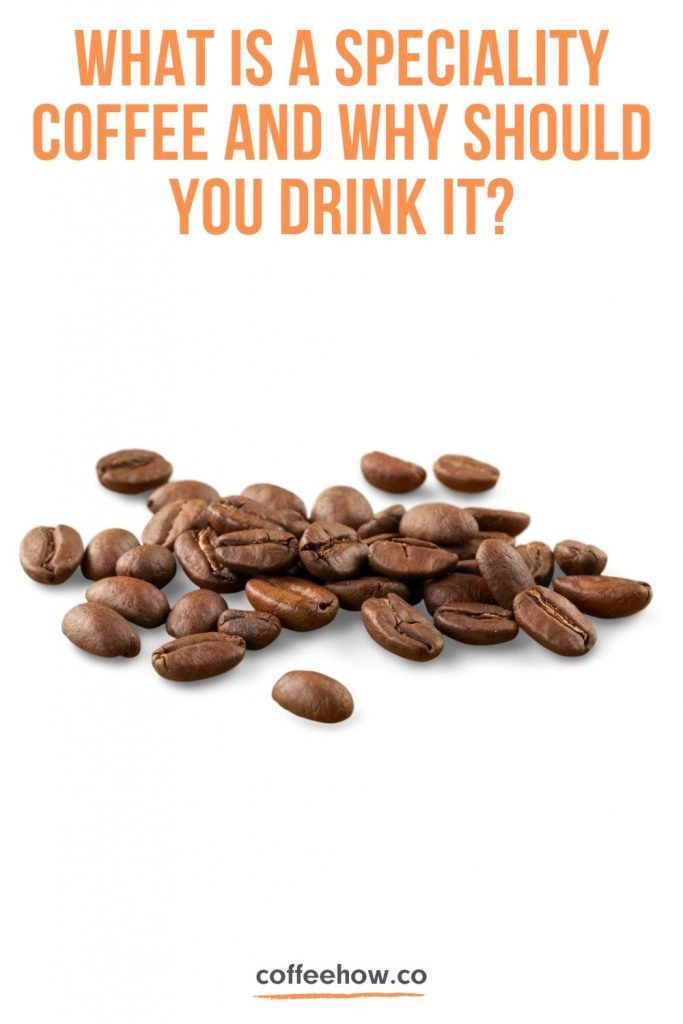fbq('trackCustom', 'view_shop_coffee'); var trackEvent = 'shop_coffee'; A gentle mist cloaks the soaring heights of the…
You treat yourself to a new bag of coffee. It’s the good stuff – we’re not talking about instant here. You take a sniff and breathe in that deep, heady aroma; enjoy every part of its rich taste and complex flavour profile. Ooooh, it’s the stuff of dreams!
What’s that on the label? ‘Speciality’? This is ‘speciality’ coffee?
Hmm, that sure sounds like a good thing. But what does it really mean? Let’s investigate!
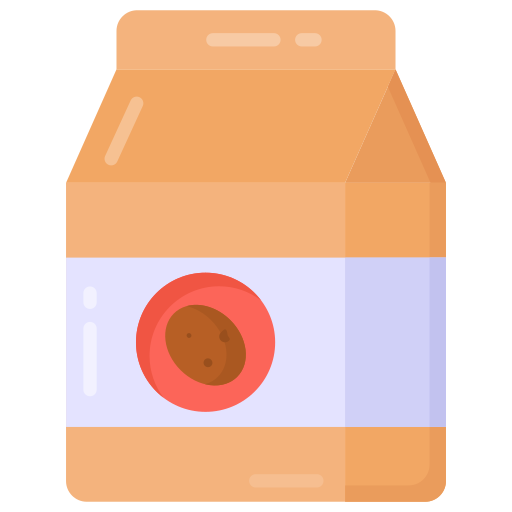
Speciality coffee (or ‘specialty’ as it’s called in America) describes the highest level of coffee you can get.
These coffees are differentiated from the rest by their high cupping score. If a coffee scores less than 80 points on the coffee grading scale, it’s a commodity and will make its way into instant blends and low-quality cups. If it scores more than 80 points, it’s speciality, and promises a coffee experience of the very best kind!
How do coffee beans gain a high score? Well, it’s a combination of things…
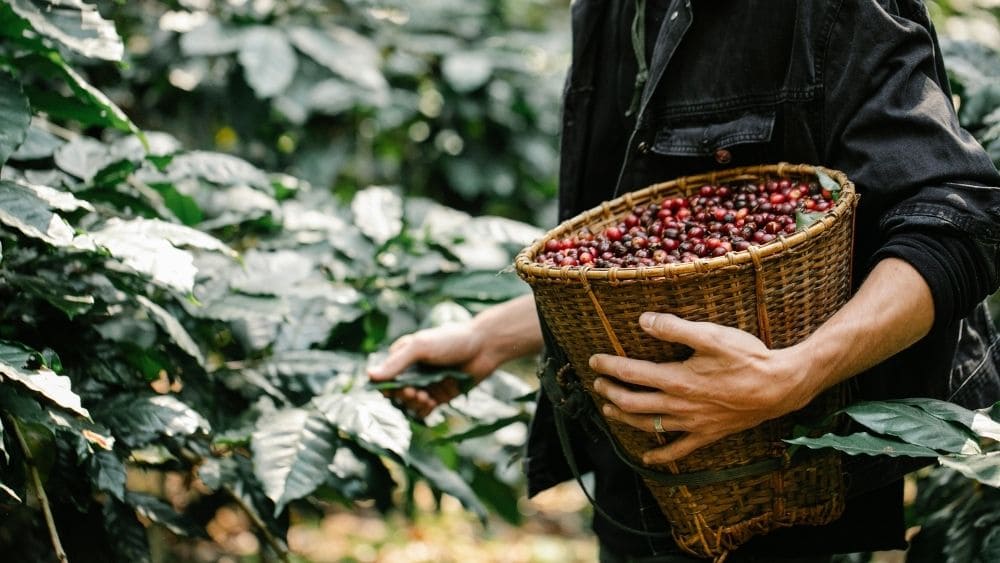

Let’s get back to the roots of speciality coffee – literally!
Speciality coffee begins with the producers. These are the farmers growing and harvesting the coffea arabica trees. Arabica coffee is the best sort of coffee, and robusta is its ugly twin. Low-quality, bitter-tasting robusta beans end up in many a commodity cup.
Speciality coffee farmers are often extremely skilled, managing farms that have been in the family for generations. They understand their soil and keep the focus on quality rather than quantity.
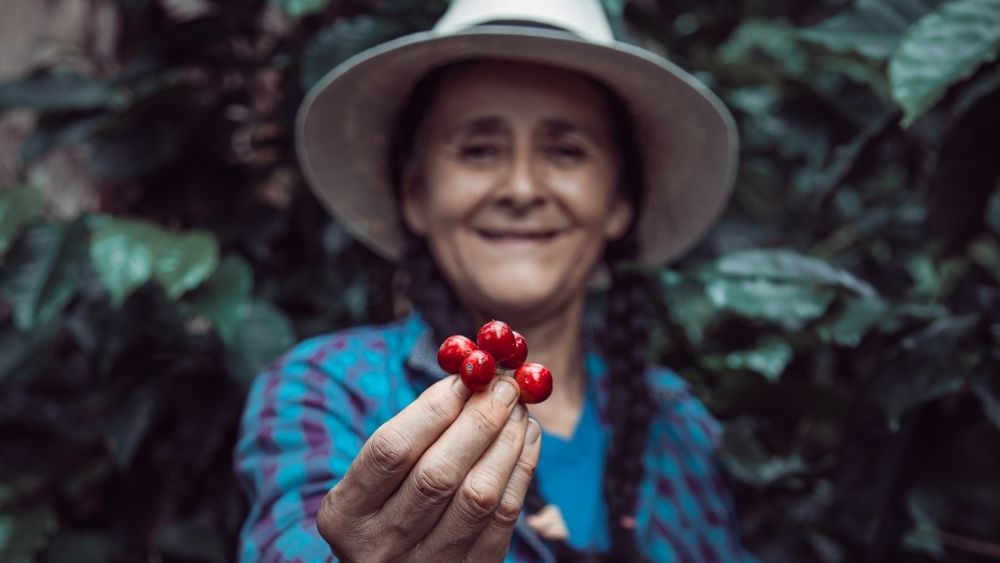
We find almost all coffee growers located in Coffee Belt countries. This 3200 mile ‘belt’ stretches from Central America to Australia and includes all the best coffee-growing countries. Conditions here are ideal for producing really good arabica coffee. Many Coffee Belt countries sport high altitudes of over 1200 metres (4000 feet). This gives the trees a cool climate, slowing down the growth rate and giving the coffee cherry more time to mature. There are fewer pests high up, too.
Shady conditions are another big bonus. Unlike commodity robusta plants, which are often planted in direct sun to turbo-charge growing speed and increase yield, many speciality coffee plants grow beneath a canopy of larger trees. These shady conditions help to slow down the growth rate, giving the flavours and natural sugars more time to develop.
Why else is shade-grown speciality so great? Because it helps to reduce the deforestation of tall tropical trees.

Ripeness is key for truly great coffee; it’s one of the main factors setting speciality coffee apart.
Take a peek inside a sack of commodity coffee cherries, and you’ll most likely find a hodgepodge of ripe, under-ripe and over-ripe cherries. This is the result of quantity-focussed strip-picking. Large-scale roasters then have to over-roast these beans to hide their unpleasant, sour flavours. And over-roasting is a death wish to coffee. It gives you a cup that tastes burnt, bitter and far too strong. Not what any coffee lover wants.
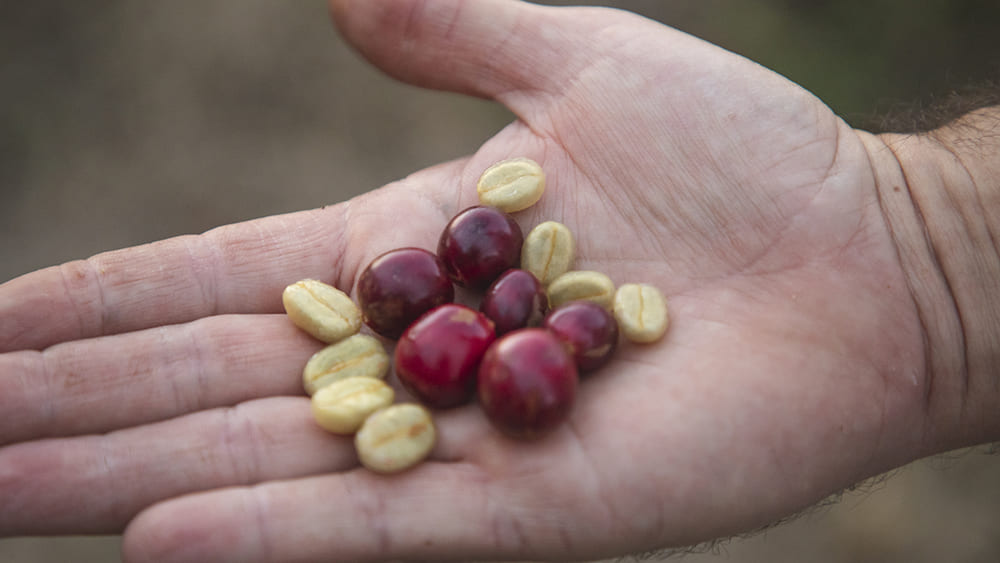
Scoot over to a sack of speciality coffee, and you’ll find another story. Skilled producers pick speciality coffee beans by hand to guarantee ripe cherries at the peak of perfection. These cherries are deep red in colour and packed with natural sweetness. Think back to when you last went blackberry picking and popped an underripe berry in your mouth. Didn’t taste great, did it? It’s much the same with coffee cherries; the best flavour comes from the ripest fruit!
Remember those high altitudes we mentioned? They’re not the easiest to navigate. Steep terrains and rough ground make handpicking a tricky task, and give us one reason why speciality coffee costs a little more than its commodity cousin.
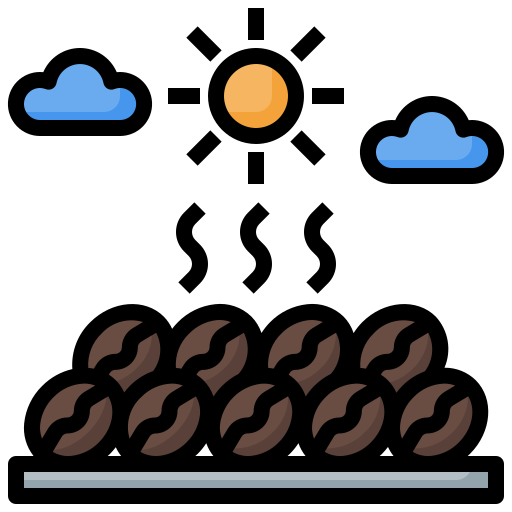
Processed-anything doesn’t sound great. But it’s a little (well, a lot) different when we talk about coffee processing.
Post-harvest coffee processing is how we remove the layers of fruit and mucilage surrounding that prize coffee bean. There are three main coffee processing methods:
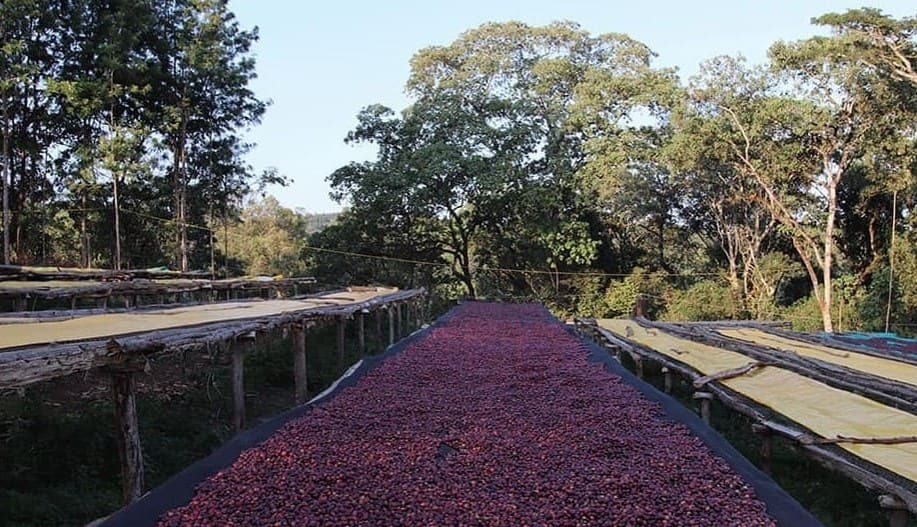
Buy a bag of speciality coffee, and you know the processing was done properly. And this is important, because each type of coffee processing influences a coffee’s flavour. Take the natural process. It gives a fruity touch to coffee, but can taste earthy and fermented when not done well.

The growing, picking and processing are done – now it’s time to set your speciality coffee on its travels!
Supply chains are kept short in the speciality coffee trade. This is because small, artisan roasters source and buy their speciality coffee as directly as possible. They might buy direct from the farmers or through an ethical coffee importer (many of which maintain bases in coffee-growing countries).
Keeping supply chains short means more money goes back to the farmers. Take Two Chimps Coffee, an indie roastery based in Rutland; they pay between 30 and 150% more than the ‘going rate’ for their speciality beans. This helps to make sure the farmers receive a higher price to invest in their business, future and livelihood.
Ever heard of C-price? This is the price for commodity coffee as it’s traded on the New York Stock Exchange. The C-price fluctuates alarmingly and has nothing to do with quality. It puts commodity coffee farmers at risk of sudden low prices and extremely unstable incomes.
It’s just another reason why you need speciality coffee in your life.

Roasting is another feature that sets speciality up high.
Coffee roasting is awesome. It takes very bitter-tasting raw coffee beans and transforms them into something flavourful and complex.
When the roasting is done well, that is. Because coffee roasting is an art (one that’s a little more complex than the Sunday dinner type). Most speciality beans are roasted by skilled independents. Hours of coursework and practical training allow indie roasters to understand the coffee bean in immense detail. Most roast by hand in small batches, allowing them to tweak and tailor their roasting recipes as needed.

Commodity coffee beans, in contrast, aren’t shown this special love. Most are roasted in bulk by mega machines. They are roasted dark, too, which is where the problems really lie. Big roasting companies need to mask the bad flavours in their low-quality robusta beans, and over-roasting is the easiest way for them to do this. Very dark roasts knock out the unpleasantness in the beans, replacing it with something that tastes bitter and burnt (not much better, if you ask us). Speciality coffee roasting is another story. Here, it’s all about bringing out the flavours in high-quality beans. And, oh my, aren’t there a lot to bring out! Hand-picked, steadily grown speciality beans are bursting with natural deliciousness. There are no nasties to hide – just lots of luscious flavour notes to emphasize! Speciality roasters fine-tune their recipes to the second to create flawless methods with just the right amount of roasting. Because there’s no over-roasting here – we just don’t need it!
How are speciality coffee beans roasted? Let’s dive in.
The love ‘n’ care begins before we even hit the heat. The roaster analyses the green (unroasted) coffee beans to ascertain their density and moisture. This important step makes it possible to set the best start temperature.
Then, it’s all eyes and ears (and noses) as the roast begins. as we adjust all the way through. Roasters use signals called ‘sensory milestones’ to mark key stages in the beans’ roasty-toasty journey:
The ‘first crack’ comes next. This is when the beans start omitting heat and begin popping – just like popcorn! In science terms, the roast becomes an exothermic rather than endothermic reaction.
Then we reach the ‘development phase’. A short development time brings out a coffee’s fruity, floral notes, while a longer time gives the rich, caramelized flavours of a darker roast coffee.
Once the roaster is happy, they drop the beans into the cooling bin. This stops the roasting process and prevents the lovely coffee from tasting ‘baked’.

Buy a pot of instant coffee and you get, errr, a pot of instant coffee.
But of a bag of hand-roasted speciality coffee, and it’ll treat you to so much more! You might choose a bright, fruity light roast. Light roast coffee beans spend less time in the roaster, are slightly higher in caffeine and offer a bouquet of floral, fruity and acidic notes. They’re ideal for a filter or cafetiere.Darker roast coffees, meanwhile, spend a little longer in the roaster. This offers the sugars more time to caramelize, giving us a rich coffee with hints of chocolate, nut and toffee. The heaven-made match for your espresso machine or AeroPress.
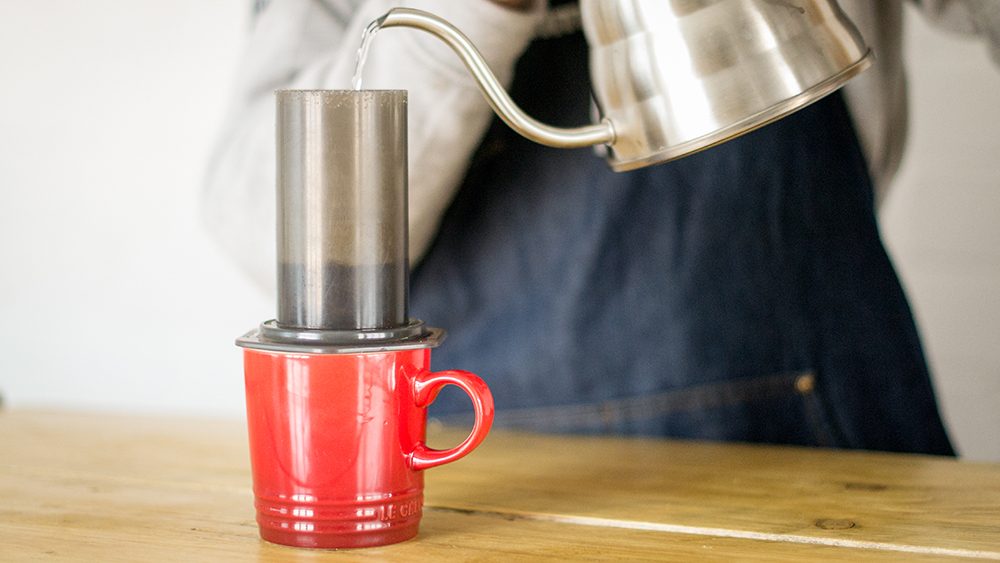

Let’s check out the speciality coffee flavour profiles in more detail. I mean, they’re pretty awesome, so they deserve it.
Various growing factors impact the flavours in a coffee:
When the conditions are favourable – when there’s a high altitude and top-quality soil – you know you’ll get a coffee brimming with delicious potential. Speciality coffees enjoy these conditions and, as such, treat you to a pretty awesome cup.
Speciality coffees come in a tantalizing spectrum of flavours. You can find bright, berryish coffees, plus rich ones reminding you of honeycomb or chocolate-covered raisins.
In comparison, commodity coffee is… disappointing. It tastes dull and uninspiring because:

You know by now that 80 is the magic number when we’re chatting coffee. Any coffee scoring less doesn’t make the speciality grade; it’s commodity coffee.
But how do we get to this number? Well, let us introduce you to coffee cupping. This is the professional way of tasting coffees and finding the best ones. Certified coffee tasters called Q graders – think of them as the sommeliers of the coffee world – brew and taste a coffee under very strict conditions. They assess every part of the coffee experience, from flavour and aroma to body and aftertaste before rating the beans out of 100:

Along with the ‘what is speciality coffee’ conundrum you may be wondering ‘why should I pay more for it – what’s in it for me?’
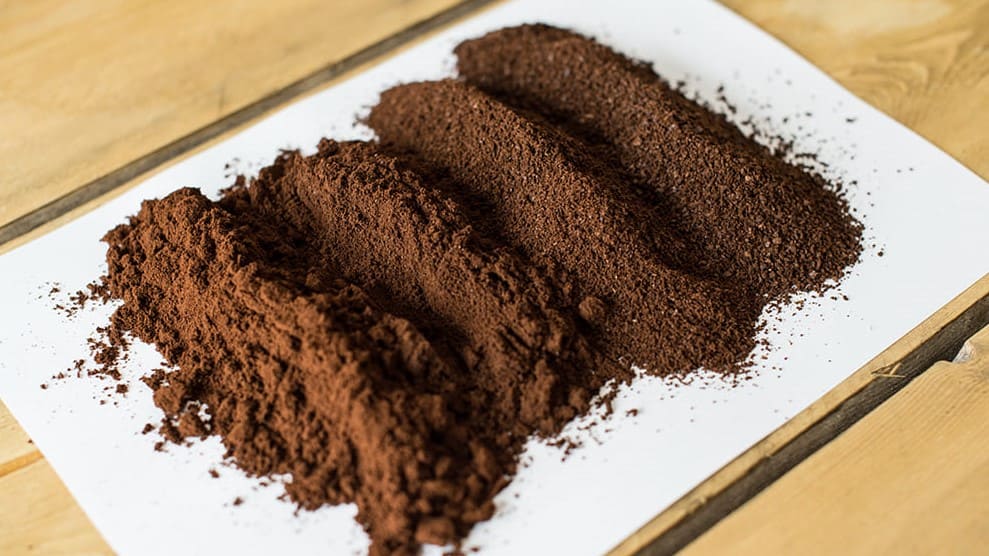

When it comes to coffee, fresh is best.
We always recommend buying in small amounts rather than bulk. This way, you enjoy freshly roasted coffee when it’s just that – fresh! Not when it’s been sitting in your cupboard for months going stale.
Coffee is perfectly safe to drink after a few months, but it will taste duller and less vibrant. Try to drink it within 12 weeks of the roast for the best flavour. Your mug will thank you!
